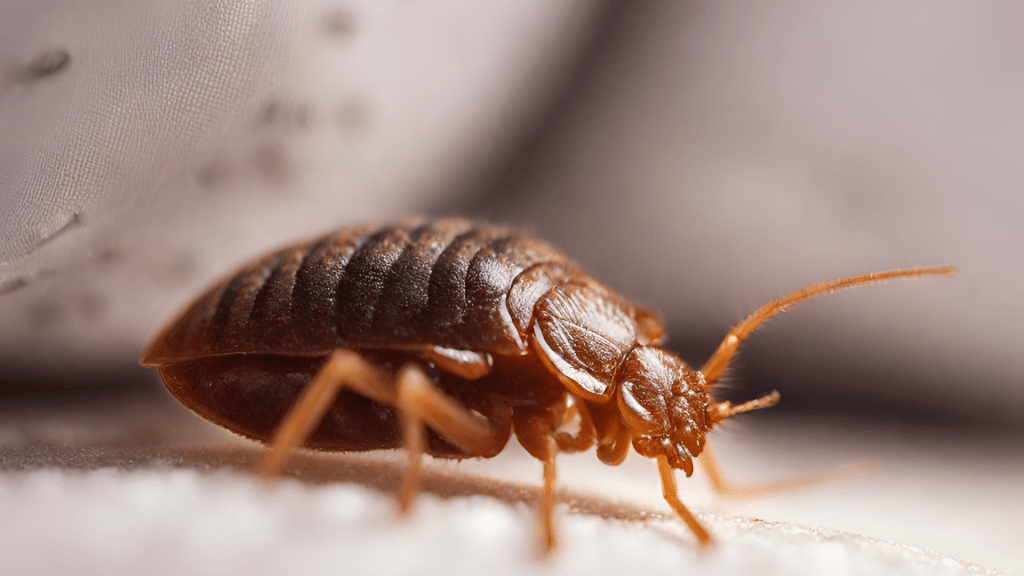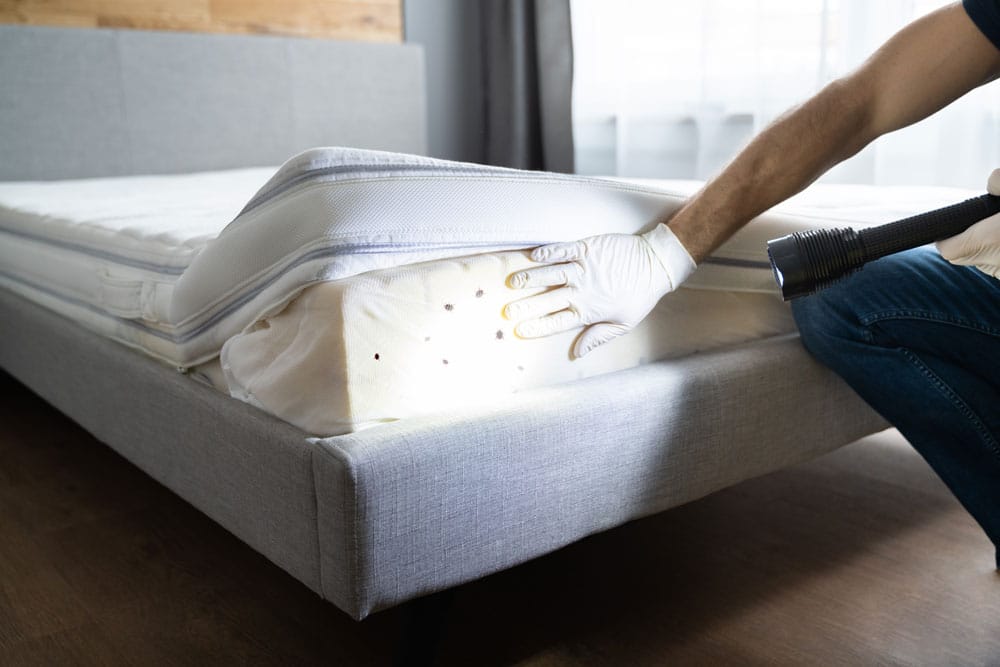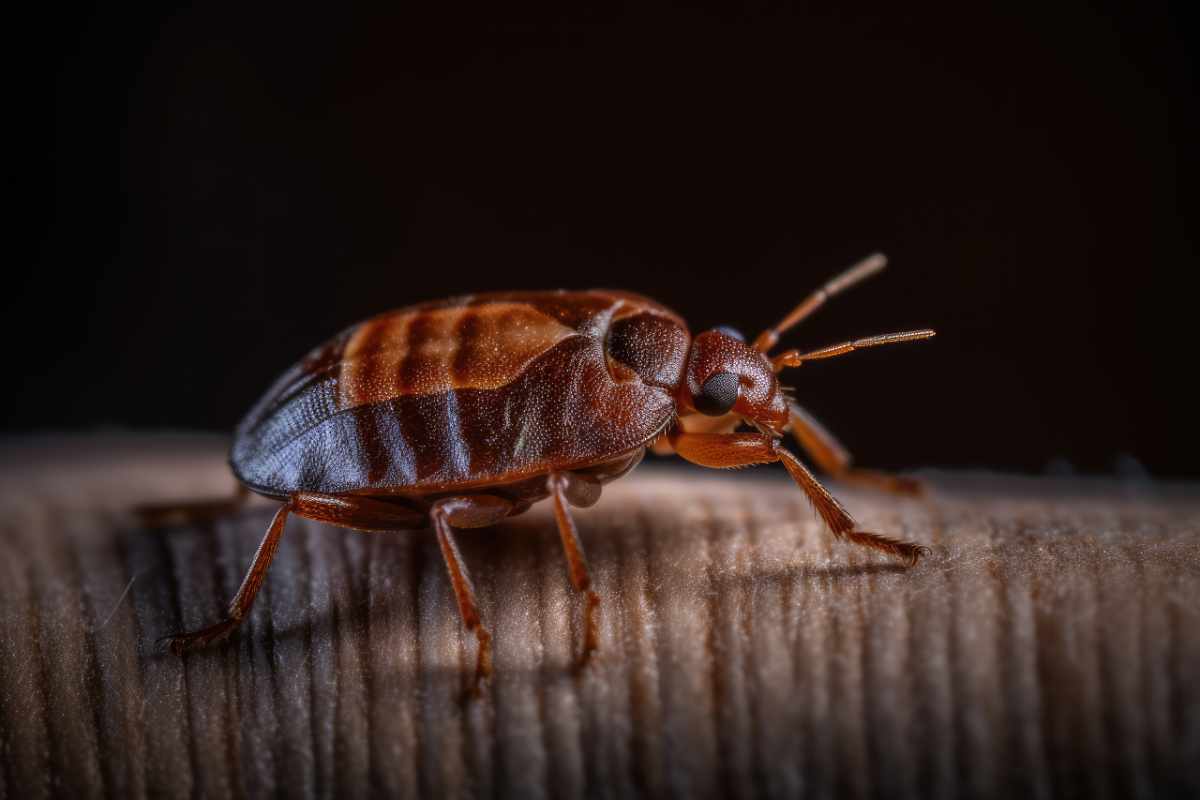Bed Bug Infestation: Effective Solutions for Homeowners
If you’re dealing with a bed bug infestation, it’s important to act swiftly. Your first step should be a thorough inspection of your home to identify the extent of the infestation.
Once you’ve located the bugs, consider using heat treatments or chemical solutions to eliminate them. These are very effective methods but may require help from professional exterminators like www.bedbugspecialist.co.uk.
Finally, prevention is key for future control. Regularly vacuuming your home and sealing cracks where they could enter are critical steps in keeping them out of your space.
Early Signs of Bedbugs

A prompt identification of a bedbug infestation is paramount. Locating it earlier can significantly reduce the hassle and costs of extermination.
The revealing signs of bedbugs are often subtle, making them easy to overlook or mistakenly identify as other insects.
Physical Signs of Infestation
One proven way to detect bed bugs is by searching for their physical evidence.
Red stains on bedding: Crushing bedbugs can result in rusty spots on mattresses or sheets.
Dark spots: Resembling a marker’s dot, these blemishes can be traced back to bed bug excrement.
Eggs and eggshells: Nymphs’ (young bedbugs) tiny cast skins are clear indicators of an infestation.
Distinguishing Bedbug Behavior and Habits
Understanding how bed bugs live, eat, and reproduce aids in early detection and effective treatment. Such insight helps monitor any future potential invasions.
Mating requires a blood meal for the bug to molt shed skin and progress through its six life stages. An adult female can lay 200-500 eggs over her lifespan, sometimes more than once a day!
Although these pests prefer night-time ventures, a hungry bedbug won’t hesitate to feed during daylight.
Temperature also impacts these insects’ livelihood. For instance, while low temperatures of 7°C (46°F) don’t deter them, anything above 45°C (113°F) is fatal to the bugs.
Nesting Habits and Favored Hideouts
If not feasting, bedbugs huddle within different household areas.
They favor the vicinity of their hosts’ bed, namely mattress seams and bed-frame cracks. However, when the room’s infestation is particularly heavy, they expand their domain to drawer joints, electrical appliances, and even screw heads.
Where Bed Bugs Hide

Bed bugs are infamous for their elusive behavior and find the most unexpected places to hide. For instance, they often reside in the seams and pockets of purses.
When a purse is placed near furniture or on the ground, it creates an opportunity for these tiny pests to sneak in.
Another surprising hiding place for bed bugs is the fur of stuffed animals. Considering that kids frequently carry them around, the risk of spreading infestations rises.
Interestingly, even fluorescent light bulbs can serve as a shelter for bed bugs. This is one unusual hiding spot you need to inspect with caution.
|
Hiding Place |
Risk Level |
Preventive Measure |
|---|---|---|
|
Purses |
High |
Avoid placing on ground or near furniture |
|
Stuffed Animals |
Moderate to High |
Regular hot cycle washing and drying |
|
Fluorescent Light Bulbs |
Low |
Careful inspection |
|
School Buses |
Moderate |
Vacuuming backpacks; Washing clothes on hot cycles |
|
Airplanes |
Moderate to High |
Watchfulness during travel; Regular clothes washing upon return home |
|
Table: Commonly overlooked hiding places for bed bugs. |
||
The risk extends beyond homes and schools. Public transport, such as school buses or even airplanes, could harbor bed bugs due to the continuous presence of people.
How to Check for Bedbugs
Bed bugs favor spaces where people sleep, such as houses, dorm rooms, and even transport like buses. These pesky creatures cleverly conceal themselves in numerous places.
During daylight, they are often found hiding in different spots on or around the bed. The likeliest spots include mattress seams, box springs, and bed frames.
They may also hide in less conspicuous areas such as dresser tables, cracks or crevices, or even behind wallpaper. It is important to examine these areas thoroughly when checking for an infestation as they provide effective camouflage for these pests.
- The telltale signs of an infestation often manifest through bite marks after sleeping. They commonly appear on the face, neck, arms, hands or any exposed area.
- Interestingly, these bites may take up to 14 days to develop.
- Besides bites, other indicators to look out for include exoskeletons shed after molting and bed bugs nestled within the folds of your mattress and sheets.
- Rusty-colored blood spots on your mattress or nearby furniture are another clear sign of a bed bug presence. An unusually sweet musty odor could also raise suspicion of an infestation.
Note that despite their ability to travel over 100 feet in a night, bed bugs tend to reside within 8 feet of their host’s sleeping area.
Remember that early detection is crucial in effectively dealing with a bed bug infestation. Be vigilant and proactive to assure your comfort and well-being.
Getting Rid of Bedbugs: Effective Methods
Bedbugs have a reputation for being elusive, often tucked away hiding in hard-to-find spots, making them challenging to spot.
Are bed bugs good at traveling?
Indeed, bed bugs are excellent hitchhikers. Their small size allows them to easily move from place to place unnoticed, especially with unsuspecting travelers.
How does panic impact managing a bed bug infestation?
No need for panic if you have a bed bug infestation. Despite their persistence, these pests can be eliminated effectively with proper measures.
Is it possible to eliminate bed bugs on my own?
Bed bug elimination can be incredibly challenging without professional help. It’s recommended to seek assistance from a pest control service.
How do we identify a bedbug bite?
Bite reactions can vary significantly, from unnoticed to severe skin reactions. However, suspecting bed bugs from skin lesions alone is not advisable; finding the pests is the only definite confirmation.
Are Bed bugs harmful to humans in any other way besides bites?
Although they feed on our blood, bed bugs are not known to transmit diseases. You can learn more about these pests from this source.
Where are we most likely to find bed bugs?
You might come across these parasites in various places including homes, schools, and even public areas like libraries or retail facilities.
Why is there an increase in bed bug infestations lately?
The surge in bed bug infestations correlates with frequent travel and improved pest control methods that often overlook these resilient creatures.
Preventing a Future Bed Bug Infestation

Bedbugs are opportunistic insects that latch onto clothes, furniture, and luggage to travel from one destination to another. Hence, maintaining vigilance can be instrumental in preventing an infestation.
Consider dressing up in maximum cover gear, such as pajamas, while at places notorious for bedbug infestations like apartments, dorm rooms, or hotels.
Secondhand items like mattresses, bedding and upholstered furniture could be hidden hotspots for these pesky bugs. Therefore, conduct thorough inspections before integrating these into your living space.
“The propensity of bedbugs to move across different locations underscores the importance of regular inspection and preventive measures.”
Interestingly, one effective strategy can be the way you handle your luggage in hotels. Avoid placing it on the floor; elevate it on tables or dressers instead.
A routine check should involve scrutinizing mattress seams for signs of bedbug excreta. Remember, these tiny creatures love fabric environments and tend to march across floors and rooms with ease.
The risk increases manifold in areas with high people flux like cruise ships, trains, buses or refugee camps. So, stay cautious while traveling in public transports or living in shared spaces.
For further reading on this subject matter, you may want to visit Mayo Clinic’s informative section on bed bugs.
When to Contact a Pest Control Professional

Do you suspect a bed bug infestation in your home? Professional pest control could be the solution. Exterminators possess efficient tools and expertise that outdo DIY methods.
Their proven strategies involve comprehensive cleaning and rearranging spaces to lower infestation chances. Superior equipment ensures quickness and effectiveness in dealing with these pests.
Despite various home remedies available, bed bugs hide in challenging spots, prompting professional intervention most of the time.
- Pricing Considerations: Pest control costs range from $500-$1500, escalating for severe infestations. Check with your landlord if applicable for cost responsibility.
- Treatment and Monitor: Post-extermination, a two-week monitoring period is essential to confirm the elimination of bed bugs. If spotted, multiple treatments might be necessary.
- Hard-to-handle Cases: Large infestations demand professional involvement, especially when mobility-restricting conditions or severe allergic reactions come into play.
- Sensitive Conditions: Certain demographics such as the elderly or pregnant women should consider seeking professional help due to health concerns potentially exacerbated by bed bugs.
The Environmental Protection Agency (EPA) suggests working with companies adhering to Integrated Pest Management principles. These professionals can be instrumental in identifying signs of recurring infestations.
If battling bed bugs proves unsuccessful via DIY methods or pesticides usage seems daunting, remember that professionals are equipped to handle larger outbreaks.
The need for a pest control professional is often determined by the extent of the infestation and one’s ability to handle it effectively. Being proactive and aware of signs can also help with this decision.
Disposing of Bed Bug Infested Furniture

Getting rid of bed bug infested furniture needs to be done responsibly to avoid the spread of these pests. Encase your infested furniture in plastic wrap to keep the bugs contained.
It’s important to add a clear sign warning others about the infestation, such as “Bed Bug Infested” or “Do Not Take”. This step is crucial to stop others from unintentionally acquiring your infested items.
The method and timing of disposal are just as significant. It is advisable to promptly discard the furniture using a secure means of transportation.
- Sealing the infestation: Carefully wrap and seal the furniture in plastic before moving it.
- Evident marking: Clearly label infested items to prevent others from taking them.
- Timely disposal: Dispose of items immediately and securely before they sit for an extended period.
The replacing of old furniture won’t necessarily eradicate an existing bed bug problem. Therefore, preventive measures for new furniture are also needed.
Ensure thorough cleaning and encasement of new mattresses and box springs. Regular washing and hot drying of bed linens are also critical. Examine new furniture carefully before introducing it into your home. This helps keep your space safe from potential bed bug threats.
When managing infested items for disposal, remember to safeguard yourself. Wearing protective clothing, gloves, and using safe handling tools like furniture dollies can minimize any risks.
If disposing of bugs-ridden items seems daunting, seek assistance from professional pest control services. They have the expertise and equipment needed for safe disposal and minimizing further spread of bed bugs.
Always be responsible while disposing of infested goods. This means limiting their presence on the curb or in public areas before trash pickup, and visibly marking them as “Bed Bug Infested”.
If personally disposing seems too demanding, consider hiring third-party professionals specializing in bed bug infested item disposal and transport. They can ensure a safe, efficient, and careful process to avoid further bug spread.
Your responsible disposal practices can significantly contribute to keeping your home and community safe from the spread of these pests. Always remember, proper precautions are essential when handling bed bug infested furniture.
Conquer the Critters
Hope is at hand for you in the battle against bed bug infestation. By adopting effective solutions, you can protect your home and sleep peacefully.
Remember, consistent cleanliness, vigilant inspections, and professional treatments are your weapons. With these tools, you can reclaim your home from those pesky invaders.
Never underestimate the resilience of bed bugs. Regularly check your spaces and take immediate action. It’s your home, don’t let them take over.







